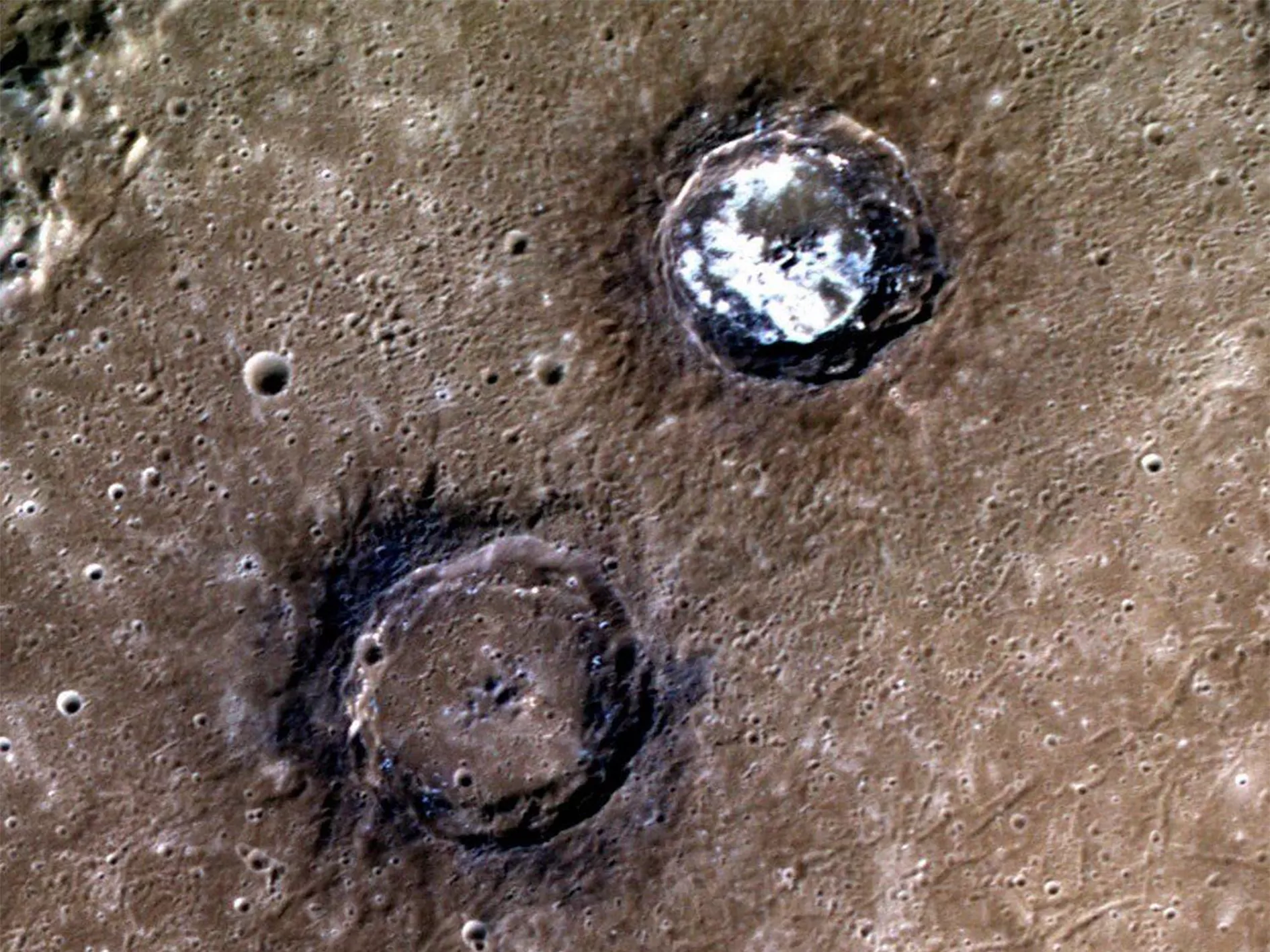Here is a color image of the craters Munch (bottom) and Sander (top), located in the area of the Plain of Heat on the surface of Mercury.
The bottom of the 50-kilometer Sander crater is covered with light material, and the 58-kilometer Munch crater has a dark «rim».
It may seem that the white material is water ice, the existence of which has been proven in the polar craters of Mercury. However, in this case, this is excluded, since the Sander crater is not in eternal shadow, and in the daytime it heats up to +427 degrees Celsius.
NASA explained this feature as follows: «In most areas of Mercury, daytime temperatures are so high that some stones and minerals—which remain unchanged elsewhere in the Solar System—begin to evaporate on the planet closest to the Sun.»
